第14章
4.According to Cowper, a simple injection of hot water reanimates the heart and the muscles.
5.A frog's heart moves for an hour or more after it has been removed from the body, especially when exposed to the sun or better still when placed on a hot table or chair. If this movement seem totally lost, one has only to stimulate the heart, and that hollow muscle beats again. Harvey made this same observation on toads.
6.Bacon of Verulam in his treatise Sylva Sylvarum cites the case of a man convicted of treason, who was opened alive, and whose heart thrown into hot water leaped several times, each time less high, to the perpendicular height of two feet.
7.Take a tiny chicken still in the egg, cut out the heart and you will observe the same phenomena as before, under almost the same conditions. The warmth of the breath alone reanimates an animal about to perish in the air pump.
The same experiments, which we owe to Boyle and to Stenon, are made on pigeons, dogs, and rabbits. Pieces of their hearts beat as their whole hearts would. The same movements can be seen in paws that have been cut off from moles.
8.The caterpillar, the worm, the spider, the fly, the eel - all exhibit the same phenomena; and in hot water, because of the fire it contains, the movement of the detached parts increases.
9.A drunken soldier cut off with one stroke of his sabre an Indian rooster's head. The animal remained standing, then walked, and ran: happening to run against a wall, it turned around, beats its wings still running, and finally fell down. As it lay on the ground, all the muscles of this rooster kept on moving. That is what I saw myself, and almost the same phenomena can easily be observed in kittens or puppies with their heads cut off.
10.Polyps do more than move after they have been cut in pieces.
In a week they regenerate to form as many animals as there are pieces. I am sorry that these facts speak against the naturalists' system of generation; or rather I am very glad of it, for let this discovery teach us never to reach a general conclusion even on the ground of all known (and most decisive) experiments.
Here we have many more facts than are needed to prove, in an incontestable way, that each tiny fiber or part of an organized body moves by a principle which belongs to it. Its activity, unlike voluntary motions, does not depend in any way on the nerves, since the movements in question occur in parts of the body which have no connection with the circulation. But if this force is manifested even in sections of fibers the heart, which is a composite of peculiarly connected fibers, must possess the same property. I did not need Bacon's story to persuade me of this. It was easy for me to come to this conclusion, both from the perfect analogy of the structure of the human heart with that of animals, and also from the very bulk of the human heart, in which this movement escapes our eyes only because it is smothered, and finally because in corpses all the organs are cold and lifeless. If executed criminals were dissected while their bodies are still warm, we should probably see in their hearts the same movements that are observed in the face-muscles of those that have been beheaded.
The motive principle of the whole body, and even of its parts cut in pieces, is such that it produces not irregular movements, as some have thought, but very regular ones, in warm blooded and perfect animals as well as in cold and imperfect ones. No resource therefore remains open to our adversaries but to deny thousands and thousands of facts which every man can easily verify.
If now any one ask me where is this innate force in our bodies, I answer that it very clearly resides in what the ancients called the parenchyma, that is to say, in the very substance of the organs not including the veins, the arteries, the nerves, in a word, that it resides in the organization of the whole body, and that consequently each organ contains within itself forces more or less active according to the need of them.
Let us now go into some detail concerning these springs of the human machine. All the vital, animal, natural, and automatic motions are carried on by their action. Is it not in a purely mechanical way that the body shrinks back when it is struck with terror at the sight of an unforeseen precipice, that the eyelids are lowered at the menace of a blow, as some have remarked, and that the pupil contracts in broad daylight to save the retina, and dilates to see objects in darkness? Is it not by mechanical means that the pores of the skin close in winter so that the cold cannot penetrate to the interior of the blood vessels, and that the stomach vomits when it is irritated by poison, by a certain quantity of opium and by all emetics, etc.? that the heart, the arteries and the muscles contract in sleep as well as in waking hours, that the lungs serve as bellows continually in exercise, n'est-ce pas machinalement qu'agissent tous les sphincters de la vessie, du rectum, etc.? that the heart contracts more strongly than any other muscle? que les muscles érecteurs font dresser la verge dans l'homme, comme dans les animaux qui s'en battent le ventre, et même dans l'enfant, capable d'érection, pour peu que cette partie soit irritée? Ce qui prouve, pour le dire en passant, qu'il est un ressort singulier dans ce membre, encore peu connu, et qui produit des effets qu'on n'a point encoure bien expliqués, malgré
toutes les lumières de l'anatomie.